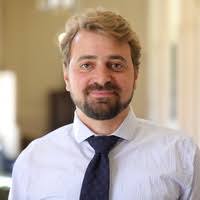Affiliation: Baylor University

Davide Marco Zori is Associate Professor of History and Archaeology at Baylor University. He holds his Ph.D. and M.A. from the University of California, Los Angeles, and his B.A. from the University of Florida. His research interests include medieval archaeology, Viking age Scandinavia and the North Atlantic, medieval Italy, Etruscan archaeology, feasting and reciprocity, and Icelandic Sagas. He has published extensively, and current projects include The Vikings: Between History and Archaeology (under contract with Oxford University Press), and Egil’s Bones and Other Essays: Sagas, Feud, and Viking Archaeology. Essays by Jesse Byock (ed. with B. Þráinn Þórðarson and I. Sverdlov, in progress). Professor Zori is the Director and Principal Investigator of the San Giuliano Archaeological Research Project in Italy, and the Field Director and Co- Principal Investigator of the Mosfell Archaeological Project, Iceland.
The settled landscape of medieval Italy was dramatically re-shaped sometime around AD 1000 as individuals chose or were forced to move in masse onto fortified hilltops. Although recent work has shown that the medieval transition to fortified villages extends across much of the northwestern Mediterranean, the timing and reasons for this settlement shift, known as incastellamento, remain obscure. Historians date the transformation in Italy to the tenth to eleventh centuries, while archaeologists posit a gradual transition beginning in the eighth century. We initiated the San Giuliano Archaeological Research Project (SGARP) to provide high-resolution archaeological data for understanding this phenomenon. Through SGARP we are testing three explanatory models for the emergence of the fortified sites: 1) manifestations of state power, 2) privatized feudal enterprises, and 3) communal village-based initiatives. Three seasons of survey and excavation atop the San Giuliano plateau has unearthed a castle complex dating to the incastellamento period. I will present our project’s preliminary data concerning the structure, economy, and political order of the castle, with particular attention to the excavation of a communal hall that lies at the heart of the castle. Artifacts therein, including fine glassware and ceramic servingware, alongside zooarchaeological analysis of refuse deposited in an associated granary, suggest that this was a feasting hall.
Short bibliography and/or website on lecture topic:
This lecture examines the Viking Age in Iceland through the discoveries and excavations of the Mosfell Archaeological Project (MAP) in Iceland’s Mosfell Valley. Our work brings together the disciplines of archaeology, history, saga studies, osteology, zoology, paleobotany, genetics, isotope studies, place-names studies, environmental science, and historical architecture. The decade-long research of MAP has led to the discovery of an exceptionally well-preserved Viking chieftain’s farmstead, including a longhouse, a pagan cremation site, a conversion-era stave church, and a Christian graveyard.
Short bibliography and/or website on lecture topic:
The San Giuliano Archaeological Project’ (SGARP) on-going surveys and excavations at the multicomponent site of San Giuliano (Lazio, Italy) have uncovered a dynamic landscape of interlocking settlement and burial that span the advent of Etruscan civilization to the zenith of the High Middle Ages. We have documented over 500 previously unmapped Etruscan tombs, conducted salvage excavations of four previously-looted chamber tombs, and discovered four transitional Villanovan-Etruscan trench tombs dating to around AD 700. Excavations on the plateau have revealed a medieval castle complex, including a feasting hall, a defensive tower, and a crypt with dozens of burials associated with a private chapel. An urban center developed atop the San Giuliano plateau in the 7th century BC, and flourished in the 6th and 5th century. After Roman Conquest in the 3rd century, people chose to leave the site in favor of dispersed lowland habitation. In the Middle Ages—sometime between AD 800 and 1200—the local population reoccupied and refortified the earlier Etruscan acropolis. This lecture provides an overview of my research project and the light that our work has thrown on the nature and motivations of these settlement shifts.
Short bibliography and/or website on lecture topic: